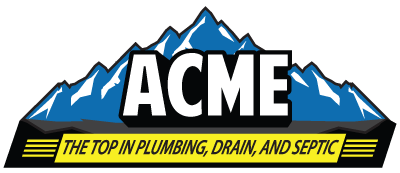Plumbing Safety Tips: Protecting Your Home and Family
The plumbing system is a vital component of every home, providing access to clean water and efficient wastewater removal. While we often take our plumbing for granted, it's crucial to prioritize safety to avoid potential hazards. In this comprehensive guide, we'll explore plumbing safety tips to protect your home and family, covering common hazards, when to call a professional, and steps to take during plumbing service emergencies.
1. Avoiding Common Hazards:
a. Chemical Awareness:
Tip: Be cautious with chemical drain cleaners. These can be harmful and may damage pipes. Opt for natural alternatives like baking soda and vinegar for minor clogs.
b. Hot Water Safety:
Tip: Adjust your water heater temperature to a safe level (around 120 degrees Fahrenheit) to prevent scalding. Always test the water temperature before bathing.
c. Proper Tool Usage:
Tip: Use tools for their intended purposes. Misusing tools can lead to injuries or damage to the plumbing system.
d. Preventing Slips and Falls:
Tip: Keep areas around sinks and bathtubs dry to prevent slips. Install non-slip mats in bathrooms to enhance safety.
e. Protective Gear:
Tip: When working on plumbing projects, use appropriate protective gear, including gloves and safety glasses, to prevent injuries.
2. Knowing When to Call a Professional:
a. Persistent Leaks:
Tip: If you have a persistent leak, especially in hidden areas, it's time to call a professional plumber. Delaying repairs can lead to water damage and mold growth.
b. Low Water Pressure:
Tip: Consistently low water pressure could indicate underlying issues. A professional can identify and address the root cause.
c. Unpleasant Odors:
Tip: Foul smells from drains or plumbing fixtures may indicate a sewer issue. Professional inspection and repairs are essential.
d. Frozen Pipes:
Tip: Attempting to thaw frozen pipes on your own may cause damage. Call a professional plumber to address frozen pipes and prevent bursts.
e. Sewer Line Issues:
Tip: If multiple drains are slow or toilets are gurgling, it could be a sign of sewer line issues. Professional assessment is necessary.
3. Steps to Take During Plumbing Emergencies:
a. Shutting Off Water:
Tip: Know the location of your main water shut-off valve. In case of a burst pipe or major leak, shutting off the water quickly minimizes damage.
b. Dealing with a Clogged Toilet:
Tip: Use a plunger for minor clogs. If plunging doesn't work, avoid excessive flushing, as it may lead to overflow. Call a plumber for persistent clogs.
c. Addressing Burst Pipes:
Tip: Turn off the water supply immediately. Open faucets to drain remaining water. Call a plumber to assess and repair the burst pipe.
d. Handling Gas Leaks:
Tip: If you smell gas, evacuate your home immediately. Do not use electrical devices or light switches. Call your gas company and a plumber to address the issue.
e. Dealing with Sewer Backups:
Tip: Avoid using sinks and toilets if you suspect a sewer backup. Call a professional plumber to inspect and clear the sewer line.
4. Preventive Measures for Families:
a. Educate Family Members:
Tip: Ensure everyone in the household knows basic plumbing safety rules, including how to shut off the water and what not to flush down toilets.
b. Regular Inspections:
Tip: Periodically inspect your plumbing fixtures for leaks or signs of damage. Promptly address any issues to prevent escalation.
c. Proper Waste Disposal:
Tip: Avoid flushing non-biodegradable items down toilets. Dispose of grease and cooking oils in a designated container, not down the drain.
d. Schedule Professional Inspections:
Tip: Consider scheduling regular inspections with a professional plumber to catch potential issues before they become emergencies.
e. Emergency Contacts:
Tip: Keep emergency contacts, including your plumber and local utility companies, readily available. This ensures quick action during emergencies.
By following these plumbing safety tips, you not only protect your home and family but also contribute to the long-term health and efficiency of your plumbing system. Prioritizing safety, knowing when to seek professional help, and taking swift action during emergencies are key elements in maintaining a secure and functional home environment.
